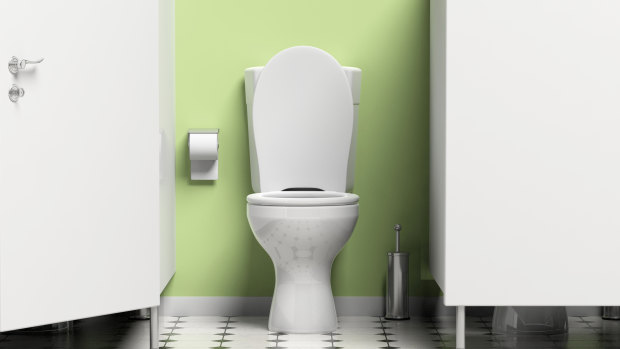Opinion
Unisex school toilets aren’t the bogeyman you think they are
Adam Voigt
CEO and former principalIf you’ll forgive the pun, Clifton Springs Primary School made quite a splash earlier this month when it unveiled its new toilet block.
Outrage and distress quickly filled the talkback airwaves and online petitions went viral due to the fact that these were loos that broke with tradition. Instead of the classic boys’ and girls’ bathrooms, the school had opted to introduce unisex toilets. Almost instantly, we seemed to collectively determine that how our kids take a leak at school is the new educational hill to die on.

A number of Victorian parents were outraged by Clifton Spring’s introduction of unisex bathrooms at their local primary school.
While it’s useful and respectful for all schools to include parents when they change something that affects their children, the oppositional stance taken by some parents – including parents whose children don’t even attend Clifton Springs Primary School – was way over the top.
Unisex toilets are not a gateway to increased sexualised behaviours at schools. They are not a sentinel to sexual predators wandering past the school. And they are not a concept that should have us reaching for the nearest pearls to clutch.
Before we even start to discuss the concept of unisex toilets in schools, it’s worth considering just how new this concept really is in the first place. The vast majority of us live in a house with at least one person of the opposite sex. Doesn’t that, by logic, make the family bathroom unisex?
On planes, too. Then there’s cafes, restaurants, entertainment venues, universities and libraries, many of which now offer unisex bathroom options. None of these industries have reported an increase in sexualised or anti-social behaviour. In fact, it’s regularly the opposite.
As anyone who has been a kindergarten or pre-school teacher, as I’ve been, will tell you that the open-plan nature of school facilities, necessitated by having to help students of that age, can result in seeing, hearing and smelling things that several years of therapy won’t erase.
Far from being a woke fad or more supposed evidence that lefty groomers are taking over our schools, we should see unisex toilets as a useful way to prepare students for the real world.
The evidence points clearly to us showing more respect for each other and the facilities when these spaces are shared.
It’s easy to think that it’s the boys who will have to lift their game. After all, the image we’ve conjured in our heads is that they are the gender responsible for flushing heads in toilets, smoking, graffiti and bullying. But, in fact, studies for decades have revealed that one of the most prevalent hot spots for bullying in schools is the girls’ toilets where the famed “mean girls” routinely take residence. Introducing unisex toilets in schools could reduce the likelihood of this phenomenon.
School toilets have also been historical places of dread for our LGBQTI+ students. Already at increased risk of bullying, mental health disorders and anxiety, and overrepresented in suicide numbers, unisex and gender-neutral bathrooms send a subtle daily message to these students that their existence matters to the school.
And while that’s mostly a secondary school consideration, there are some benefits in primary schools too, where we have a distinct imbalance of genders on school staffs. Unisex toilets mean that any on-duty teacher can supervise the surrounds of any toilet for undesirable behaviours.
Another clear benefit is that female students almost universally access more cubicles under such a model. This reduces wait time, and makes any emergencies easier and quicker to deal with, which are a common occurrence during primary school years.
Perhaps the one consideration we need to make is around modesty. While going gender-neutral presents many positive opportunities, we also need to ensure that our facilities are constructed with respect for the modesty of our kids, specifically our maturing girls, in mind.
Yes, the shift to unisex facilities in schools is a change, and all change requires management. It takes time and some getting used to. But the wonderful news is that kids are usually far better at adapting to change than we are as adults. As is proven at Clifton Springs Primary School, where some of the adults took the tantrum baton from the kids when they discovered the dunnies had changed a bit.
Yes, some kids will be more uncomfortable than others when they experience the difference for the first time. But varying levels of discomfort are also generated in students when they initially eat broccoli, learn long division or essay writing, or have to start tidying their own bedrooms.
If they can survive those discomforts, then they’ll handle unisex toilets without too much of a problem. That is if the adults let them.
Adam Voigt is a former principal and founder and CEO of Real Schools.
The Opinion newsletter is a weekly wrap of views that will challenge, champion and inform your own. Sign up here.